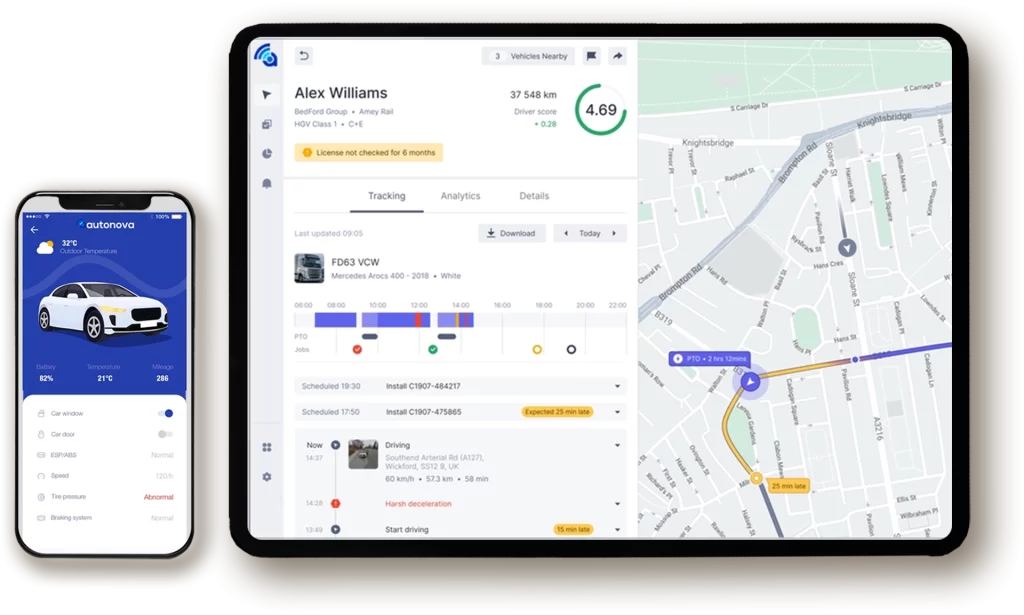Solutions
Supply Chain Analytics
This refers to the use of data and analytics tools to optimize the logistics and transportation of goods within a supply chain. This can include tracking the movement and status of goods in real-time, managing inventory levels, forecasting demand, and monitoring performance.
This can include tracking the movement and status of goods in real-time, managing inventory levels, forecasting demand, and monitoring performance.
Maximizing the efficiency of your supply chain with advanced fleet analytics
At Autonova, Some of the key features of our Vehicle Diagnostics & Maintainence solution include:

Real-time tracking
Supply chain analytics systems often include real-time tracking of fleet vehicles, allowing logistics managers to monitor the location, movement, and status of goods in transit.
Inventory management
Supply chain analytics systems can help to manage inventory levels and identify opportunities for optimization, such as consolidating orders or using alternative modes of transportation.
Demand forecasting
Analytics systems can be used to forecast demand for goods and services, allowing logistics managers to plan ahead and allocate resources accordingly.
Frequently Asked Questions about Supply Chain Analytics
In this section, you will find answers to common questions about Supply Chain Analytics. We cover topics such as how Supply Chain Analytics works, how it can be used to improve efficiency and reduce costs in the supply chain, how it can provide real-time visibility into the movements and status of goods, and how it can help with compliance and risk management.
Supply Chain Analytics is the use of data analytics and other tools to optimize the performance of a company’s supply chain. It typically involves the collection and analysis of data from multiple sources, such as telematics systems, to identify areas for improvement and to make data-driven decisions about the movement and management of goods in the supply chain.
Supply Chain Analytics can be used to improve efficiency and reduce costs in the supply chain by optimizing routes, reducing inventory levels, and improving the flow of goods through the supply chain. It can also help identify bottlenecks and other inefficiencies, as well as provide insights into customer demand and other factors that can impact the supply chain.
Yes, Supply Chain Analytics can provide real-time visibility into the movements and status of goods in the supply chain. This can enable more efficient planning and coordination of the movement of goods, as well as allow for more accurate tracking of the location and status of goods at all times.
Supply Chain Analytics can help with compliance and risk management in the supply chain by providing data on the movements and status of goods, as well as by alerting to potential issues or discrepancies. It can also help ensure that the supply chain is operating in compliance with regulatory requirements and industry standards.
Yes, Supply Chain Analytics can be integrated with other systems and processes within an organization. This can include integration with inventory management systems, transportation management systems, and other systems that are involved in the supply chain process. Integration can enable more seamless and efficient operations and allow for the sharing of data and insights across the organization.